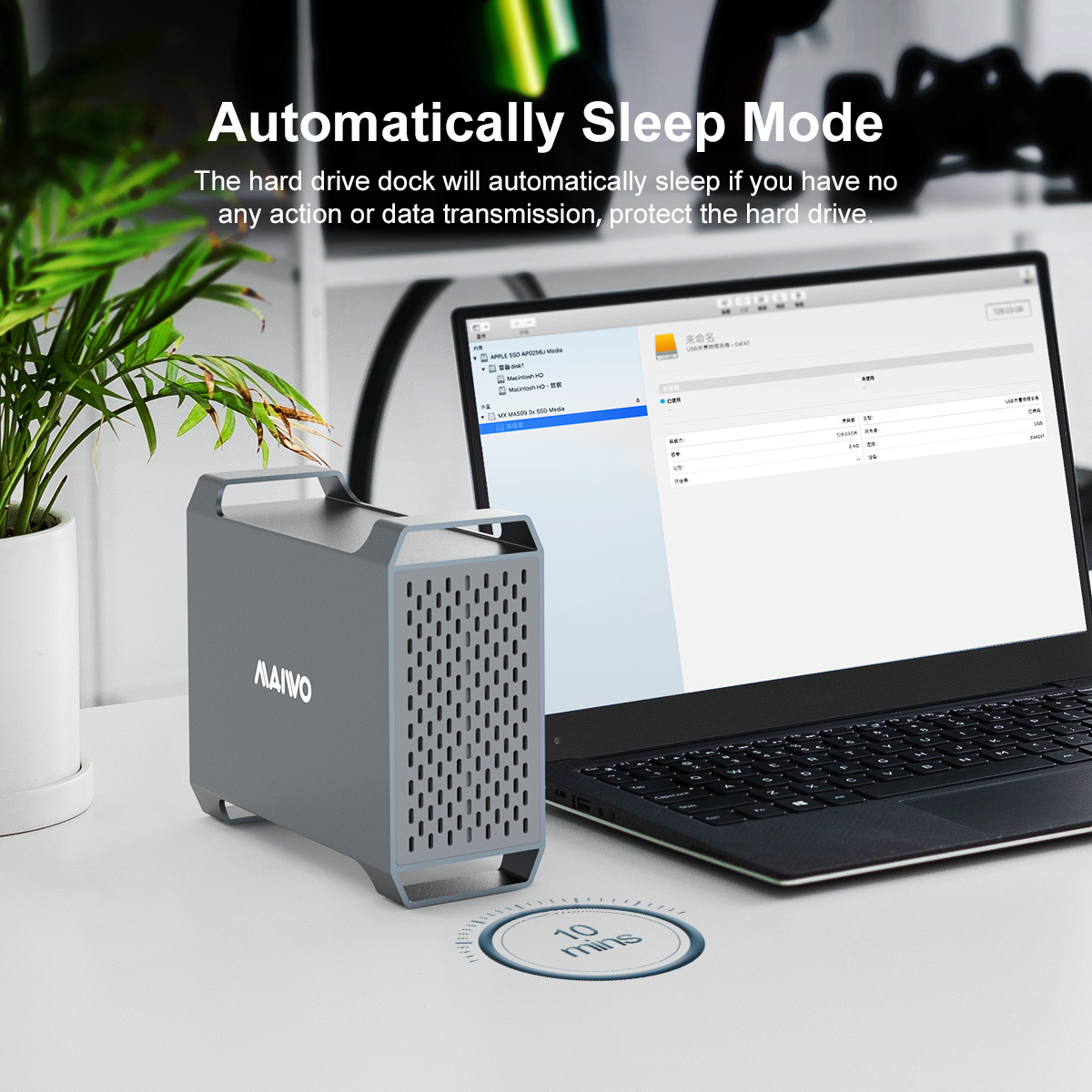In the world of data storage, Network-Attached Storage (NAS) and RAID (Redundant Array of Independent Disks) enclosures are two popular choices. Both serve the critical function of storing and safeguarding data, but they do so in distinct ways. In this article, we'll delve into the differences between NAS and RAID enclosures, helping you make an informed decision when selecting the right storage solution for your needs.
一 NAS: Network-Attached Storage
Network-Attached Storage (NAS) is a dedicated storage device that is connected to a network and provides file-based data storage services to multiple clients. Here are the key characteristics of NAS:
1. Network Connectivity:
- NAS devices have built-in network interfaces, usually Ethernet ports, enabling them to connect directly to your local area network (LAN).
- Users can access data stored on NAS drives over the network, making it an excellent choice for file sharing and centralized storage.
2. File Services:
- NAS units function as file servers and offer various network protocols such as SMB/CIFS (Common Internet File System), NFS (Network File System), and AFP (Apple Filing Protocol).
- They often come with web-based interfaces for easy management and configuration.
3. Data Redundancy and Backup:
- Many NAS devices support RAID configurations, which offer data redundancy and protection against drive failures.
- NAS systems often provide backup options, including scheduled backups to external drives or cloud services.
4. Applications and Expandability:
- NAS devices can run a variety of applications, such as media servers, surveillance camera software, and more.
- They typically allow for expandability by adding additional hard drives to increase storage capacity.

二 RAID Enclosures: Data Redundancy and Performance Focus
RAID enclosures, on the other hand, are external storage devices designed primarily to provide data redundancy and enhanced performance through the use of multiple hard drives. Here are the main aspects of RAID enclosures:
1. Data Protection:
- RAID configurations like RAID 1 (mirroring) and RAID 5 (striping with parity) offer data redundancy and fault tolerance.
- In RAID 1, data is duplicated on two drives, while RAID 5 distributes data and parity information across multiple drives, protecting against drive failure.
2. Improved Performance:
- RAID 0 (striping without redundancy) can significantly improve read/write speeds by distributing data across multiple drives.
- RAID 10 combines mirroring and striping, providing both redundancy and enhanced performance.
3. Limited Network Connectivity:
- Unlike NAS devices, RAID enclosures generally lack built-in network interfaces.
- To access data in a RAID enclosure over a network, you need to connect it to a NAS or a computer acting as a file server.
4. Focused on Data Storage:
- RAID enclosures are primarily storage devices, emphasizing data protection and performance enhancements without the additional features of NAS, such as running applications or direct network connectivity.
三 Choosing Between NAS and RAID Enclosures
The choice between NAS and RAID enclosures hinges on your specific storage requirements and use cases. Consider the following factors when making your decision:
Choose NAS If:
- You need a centralized file storage and sharing solution for multiple users or devices.
- Network connectivity and remote access are essential.
- You require additional features like media streaming, automated backups, or running specialized applications.
Choose RAID Enclosure If:
- Data redundancy and protection against drive failure are your primary concerns.
- You aim to enhance data read/write speeds through RAID configurations.
- You plan to use it as part of a larger storage infrastructure, such as connecting it to a NAS or a file server.
To sum it up, NAS and RAID enclosures serve distinct purposes in the realm of data storage. NAS devices are versatile, offering network connectivity and a wide array of features beyond basic storage. In contrast, RAID enclosures are dedicated to data redundancy and performance enhancement through various RAID configurations. Your choice should be driven by a careful assessment of your storage needs and goals, whether it's networked versatility or data protection and performance. Ultimately, the decision will depend on your specific requirements and preferences.